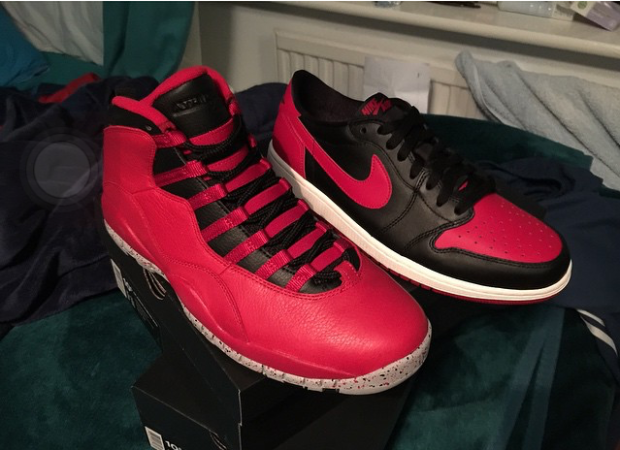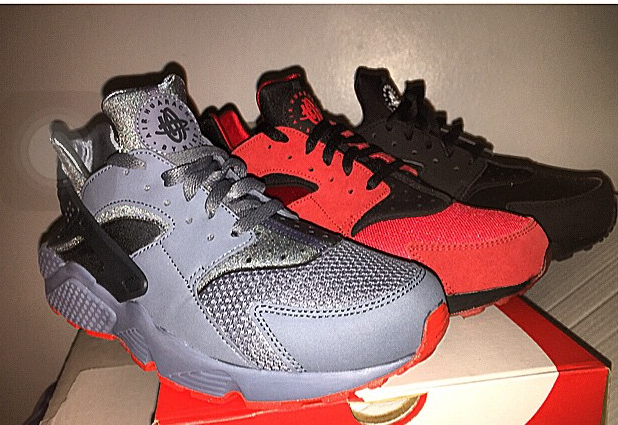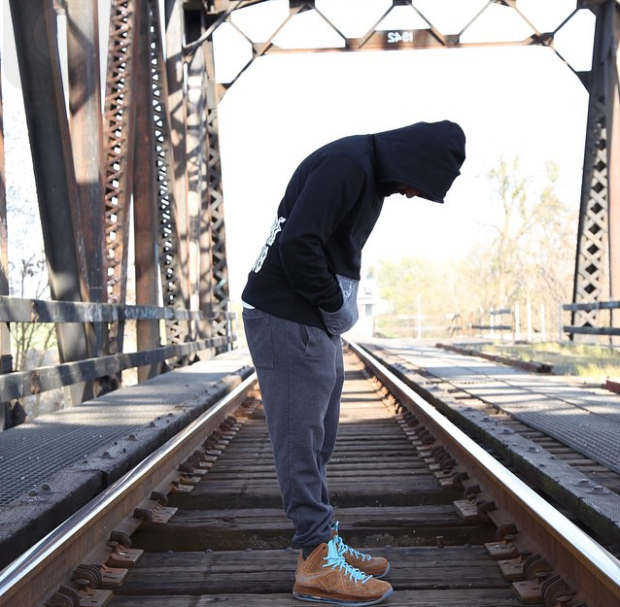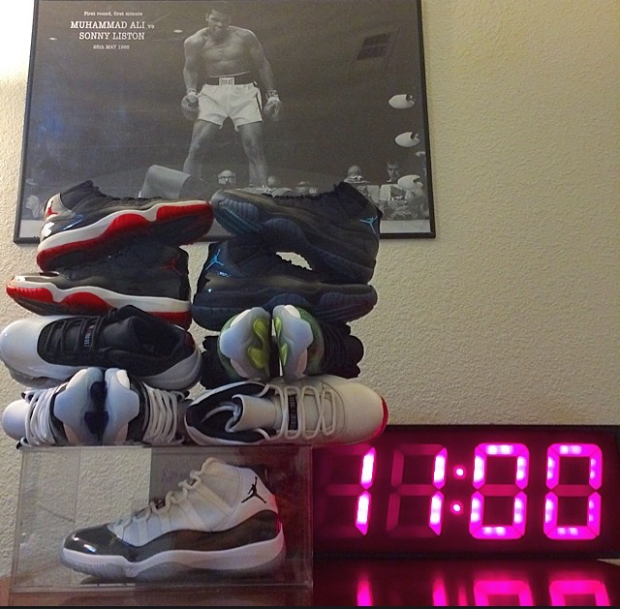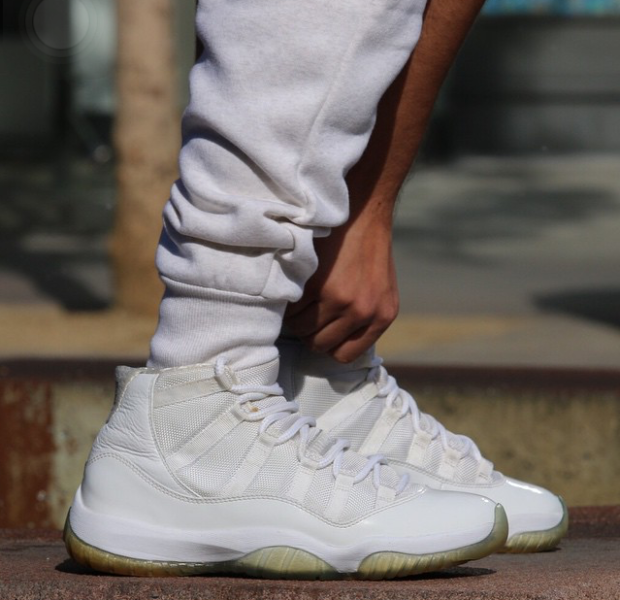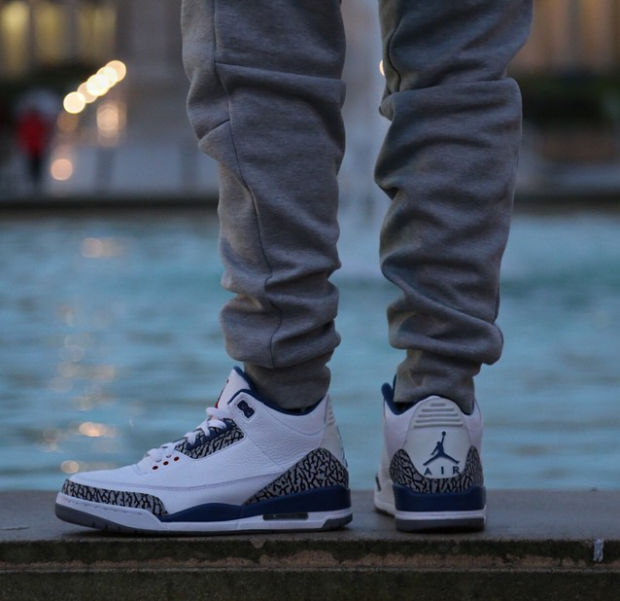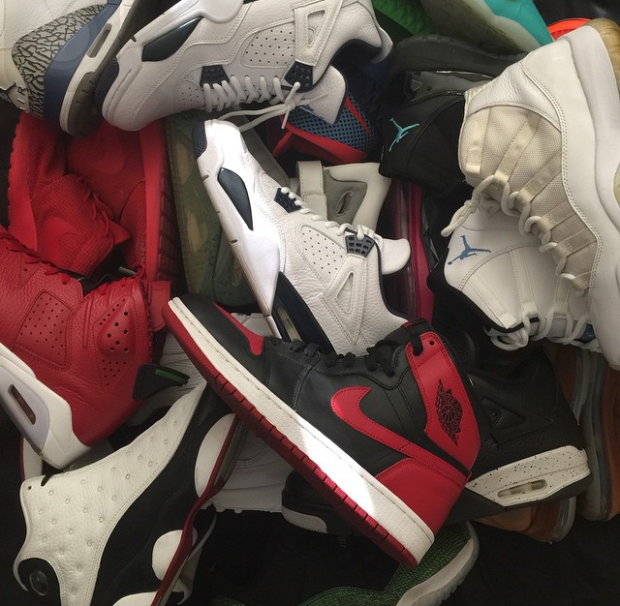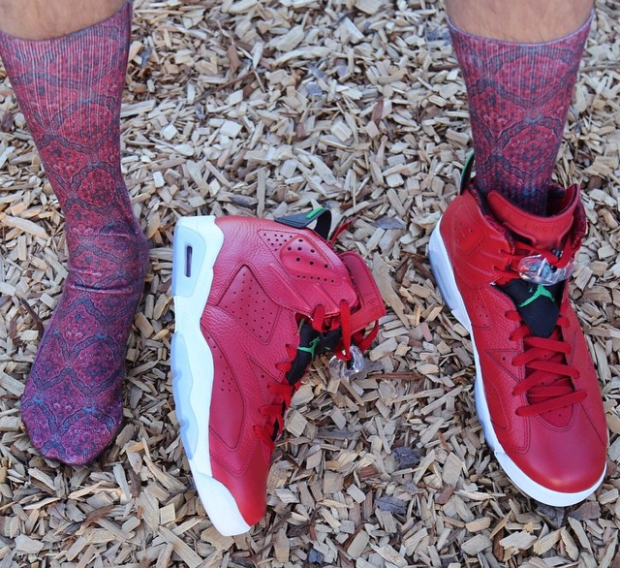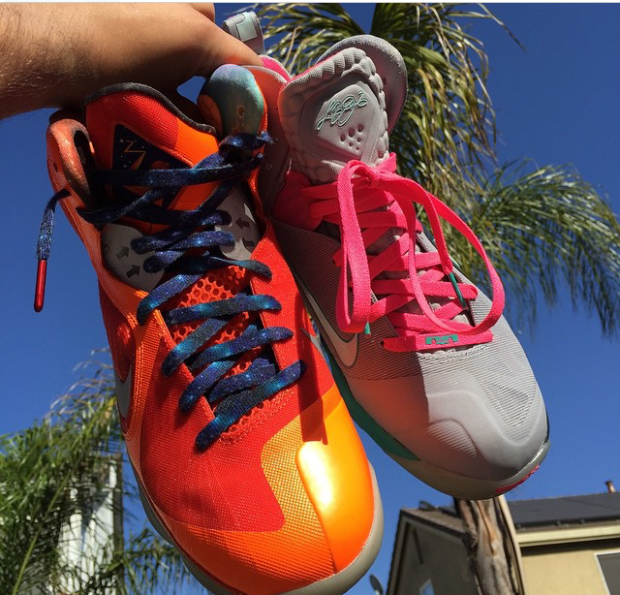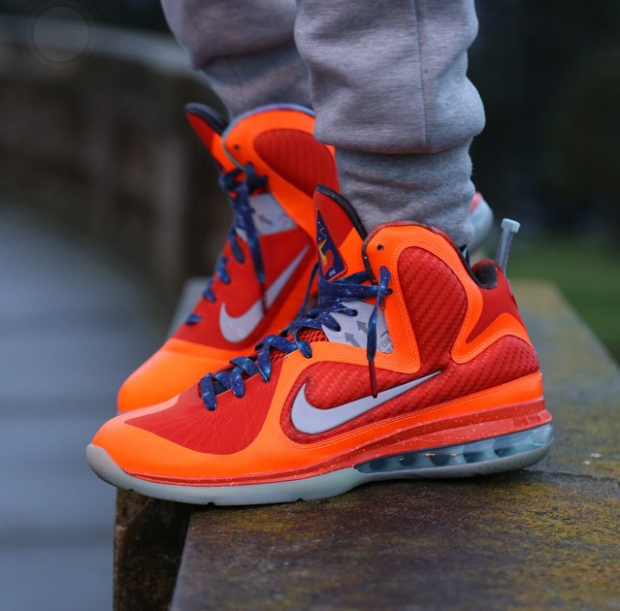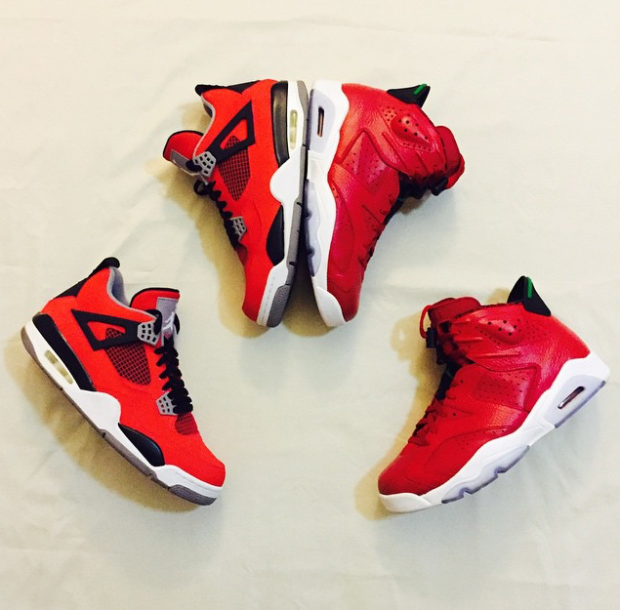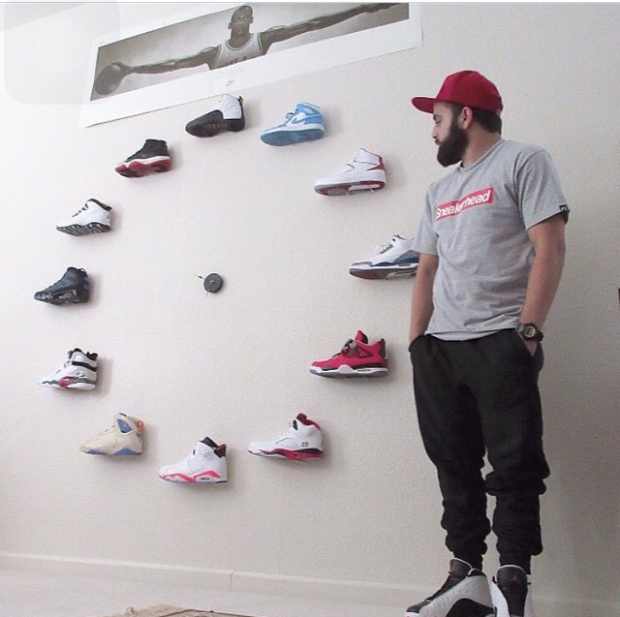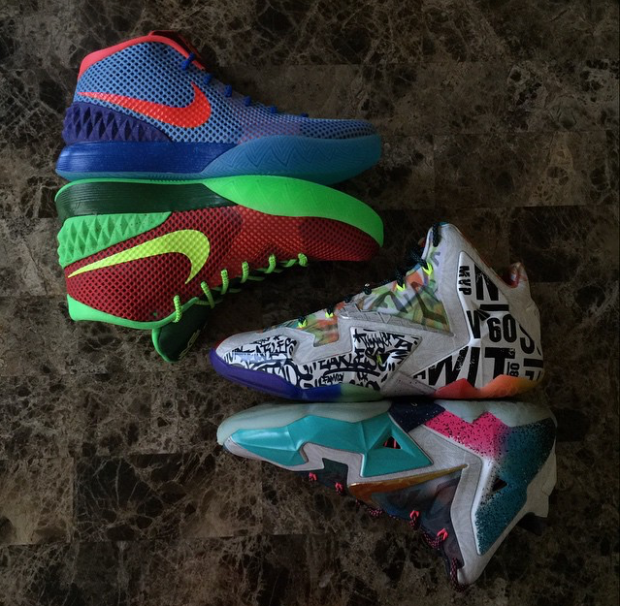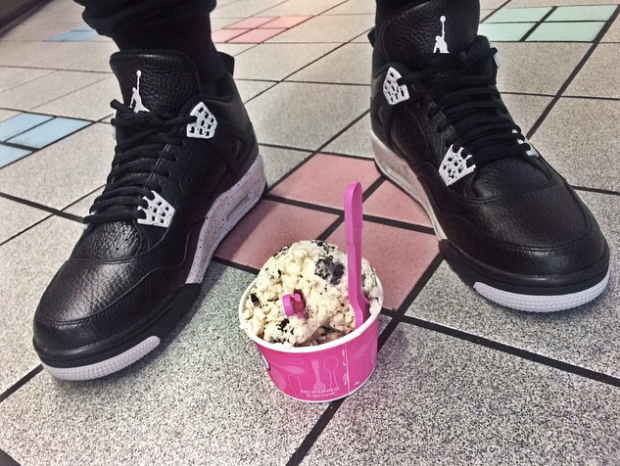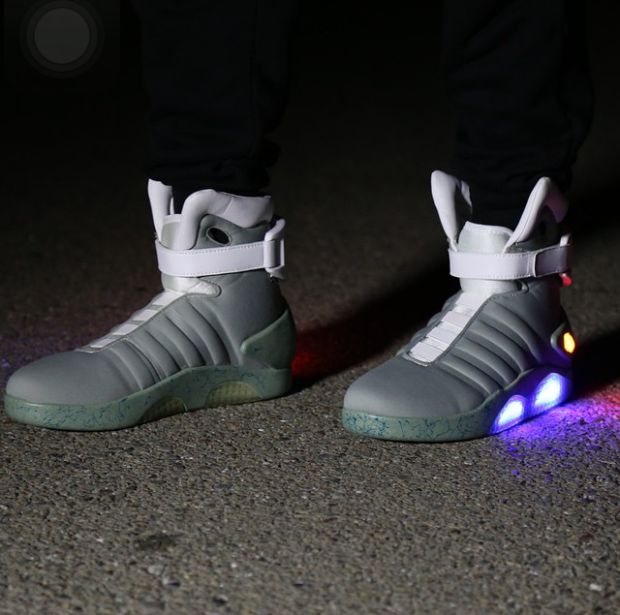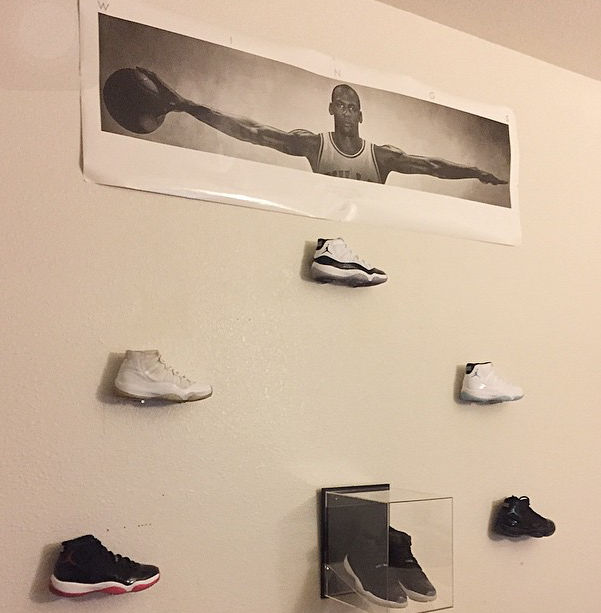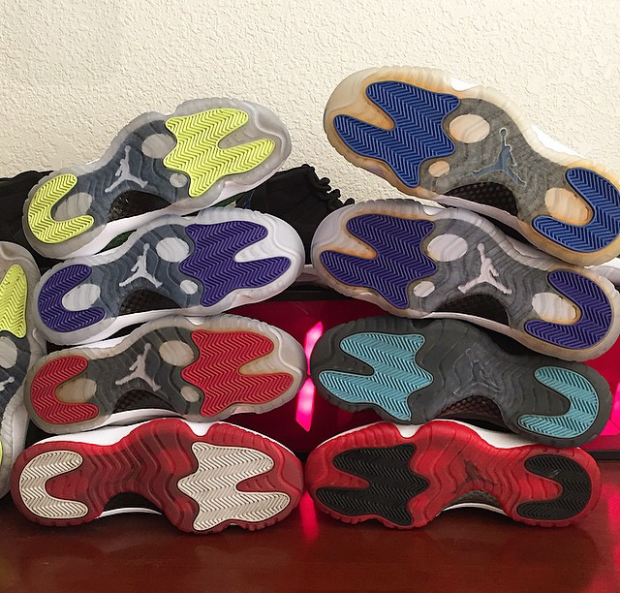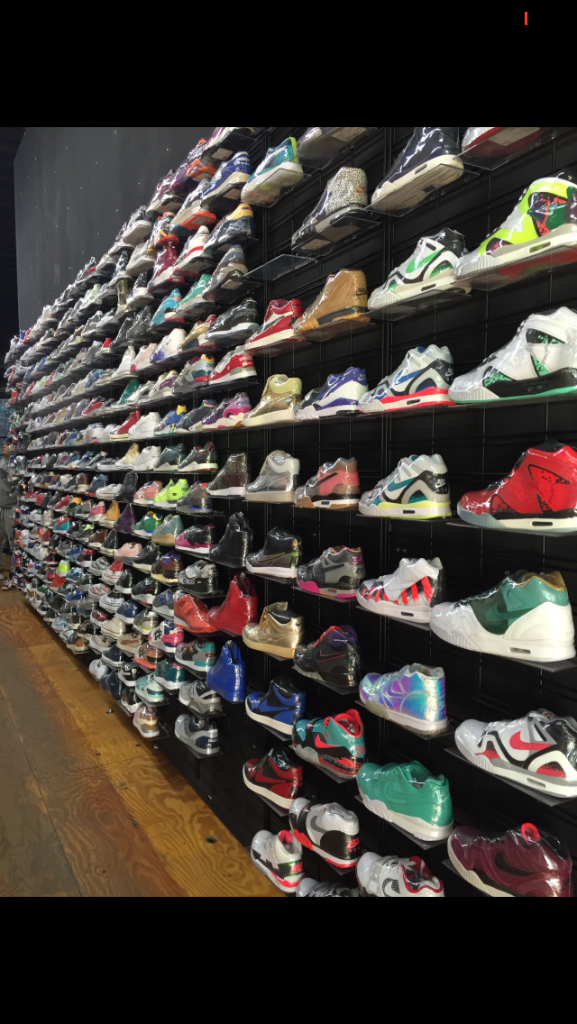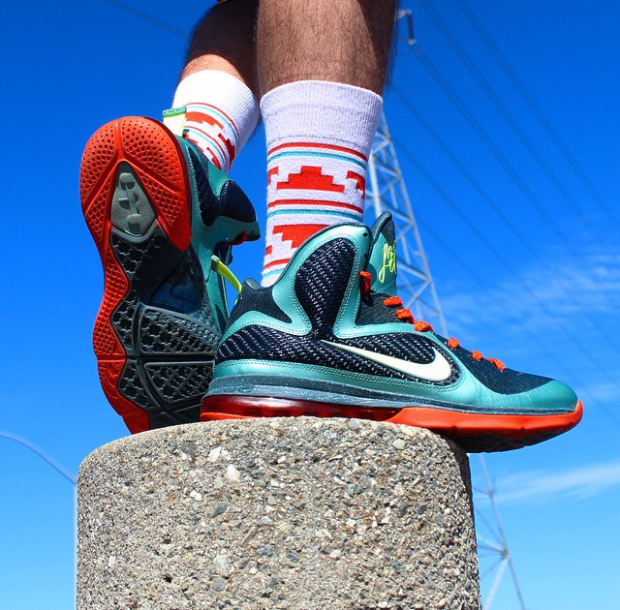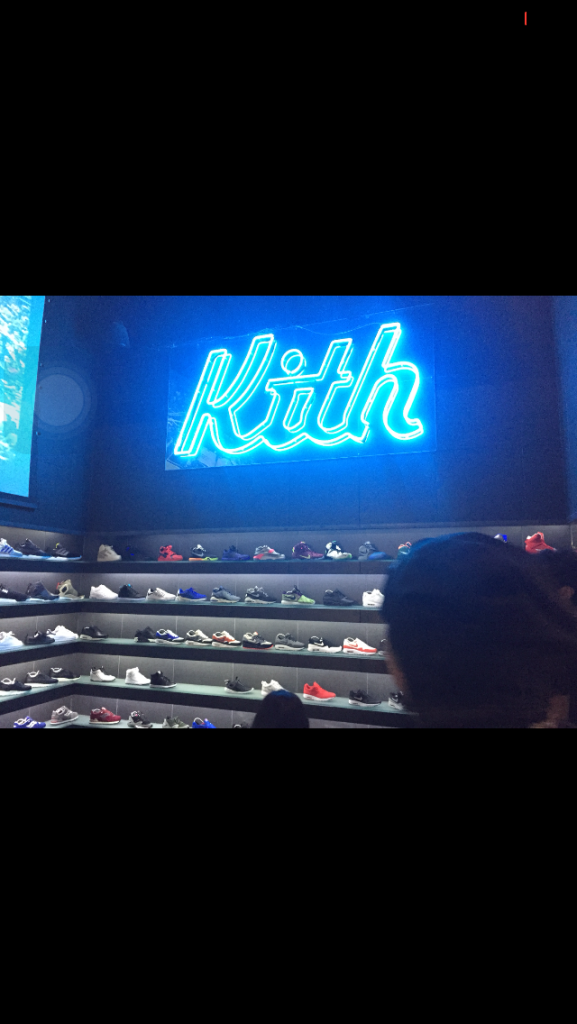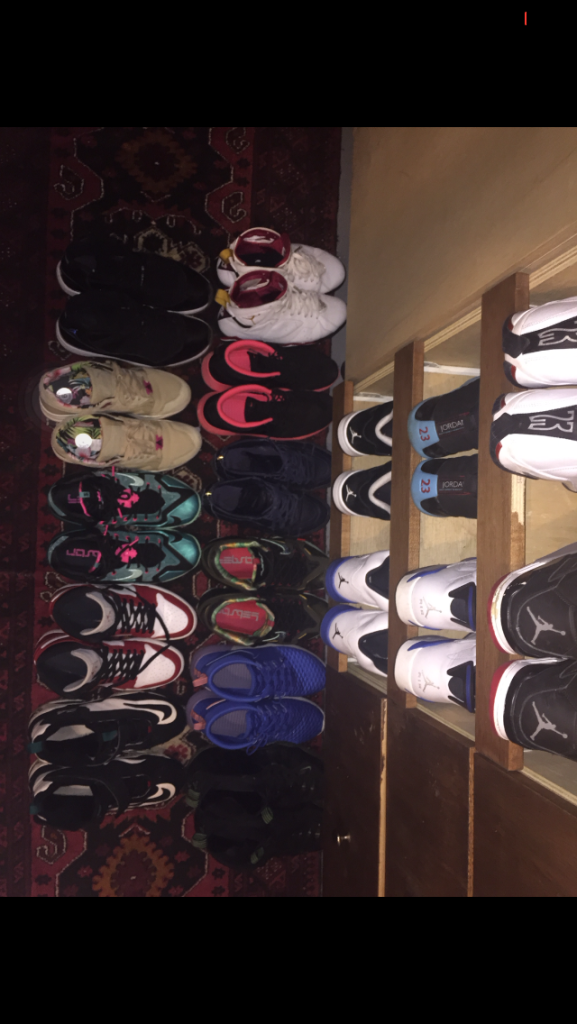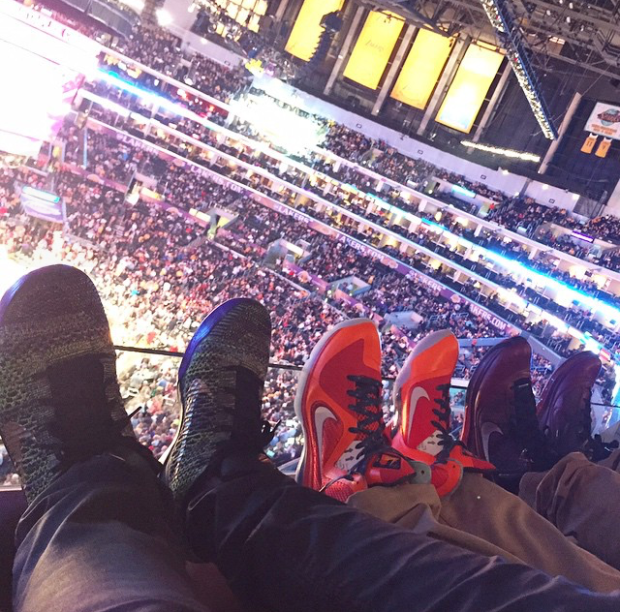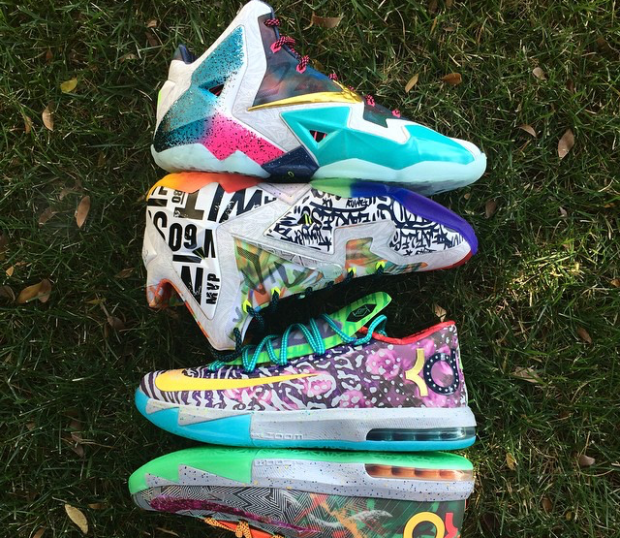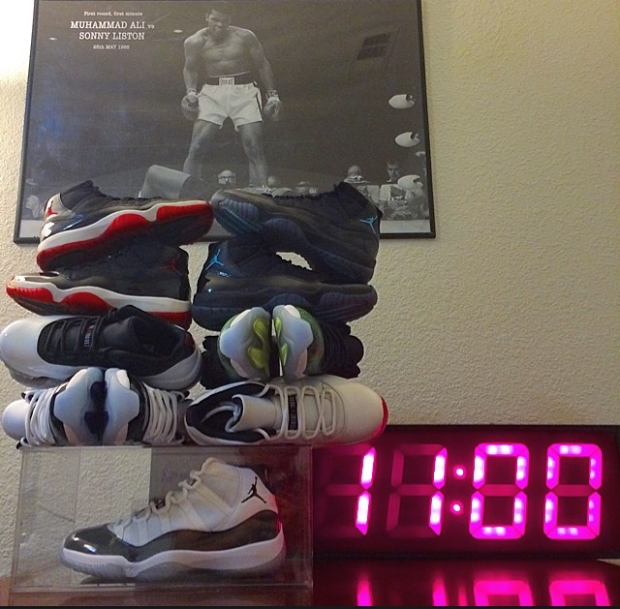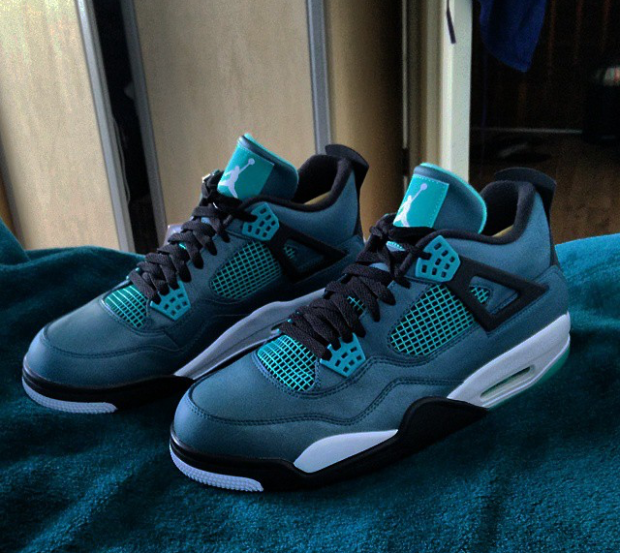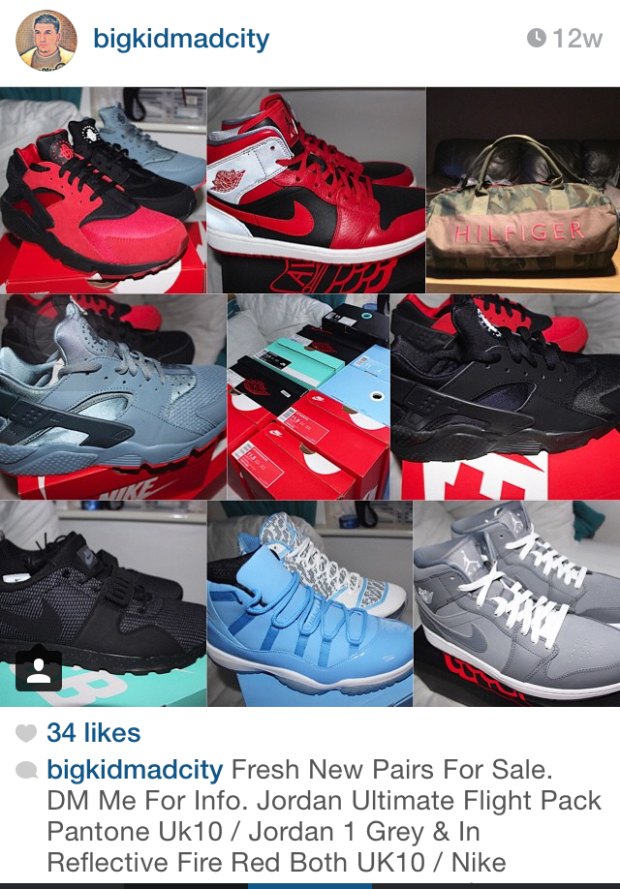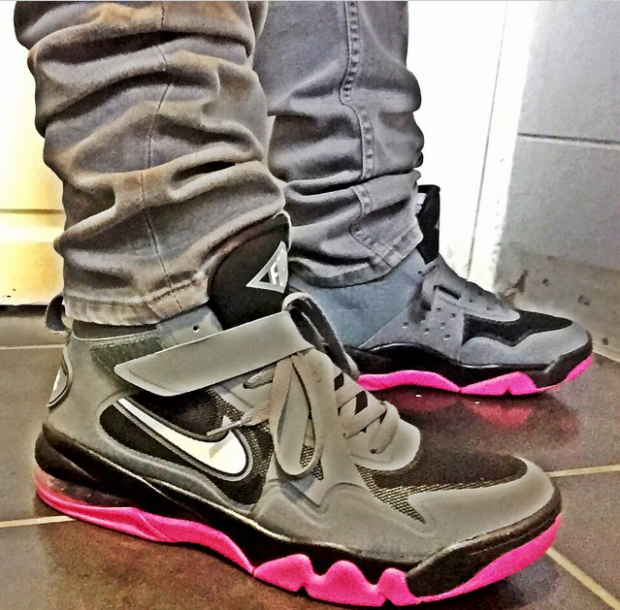

Sneaker Culture
Archive 2015 Apr 27, 2015 Nabeela Hashimi

- Photo Credit Big Kid Mad City/ Ansar Mahmood
- Photo Credit Big Kid Mad City/ Ansar Mahmood
- Photo credit Sohrab Mejhidi
- Photo credit Sohrab Mejhidi
- Photo credit Sohrab Mejhidi
- Photo credit Sohrab Mejhidi
- Photo credit Sohrab Mejhidi
- Photo credit Sohrab Mejhidi
- Photo credit Sohrab Mejhidi
- Photo credit Sohrab Mejhidi
- Photo credit Sohrab Mejhidi
- Photo credit Sohrab Mejhidi
- Photo credit Sohrab Mejhidi
- Photo credit Sohrab Mejhidi
- Photo credit Sohrab Mejhidi
- Photo credit Sohrab Mejhidi
- Flight Club -New York City
- Photo credit Sohrab Mejhidi
- Kith- New York City
- Photo credit Sohrab Mejhidi
- Photo credit Sohrab Mejhidi
- Photo credit Sohrab Mejhidi
- Big Kid Mad City/ Ansar Mahmood
- Photo Credit Big Kid Mad City/ Ansar Mahmood
- Photo Credit Big Kid Mad City/ Ansar Mahmood
The Sneaker Industry
Nabeela Hashimi
Abstract:
Society has witnessed a dramatic period of change in the footwear industry; this kind of obsessive behaviour will make some sneaker enthusiast do anything for a pair of sneakers. Sneaker culture has lead to a consumerist phenomenon of buying and trading athletic footwear. They’re more than something you put on your feet says Torontonian sneaker collectior, Kareem Gordan. Sneaker enthusiast will pay several hundred dollars or thousands for a pair of sneakers. The demand for certain models has created a cult-like following, however, Gordan says sneakers is a creative self-expression accessory. It seems that a pair of kicks is a way of helping individuals express themselves in legendary sneakers. One can argue that sneaker brands have a personality or some at least have a strong, distinctive personality such as the Air Jordans and Air Yeezy’s by Kanye West.
The intention for this paper is to study and analyze the growth of sneaker culture and how it has become a popular culture among male youth and adult— buying sneakers to trade or flip for profit.
Introduction
In the past few years, there has been an ongoing consumer paradigm shift in attitudes toward sneakers. Once an underground love and appreciation for sneakers has now grown into a pop culture phenomenon. Athletic shoes have outgrown their street wear origin and become big business. “I started collecting sneakers in 2007, when I was in high school,” says 27 year-old Toronto sneaker enthusiast Shahin Shamshiri.
“A friend of mine had a pair of Air Forces for sale. I had to save up my lunch money to buy them,” he added. Shamshiri explains how they are crucial to his appearance. According to the global information company NPD group, sales of athletic shoes grew by 12 per cent, from US$1.63-billion to US$1.83-billion, in 2014
“While growing up I always wore plain hoodies with a pair of clean sneakers, this made the outfit go from a 6 to an 8,” says Shamshiri. “Every outfit starts with the shoes, it’s like having art on your feet. It makes you stand out, you can tell a lot about someone from his or her shoes,” he added.
Shabir Karim, a 22 year-old sneaker collector from New York, says Nike Air Jordans are considered to be one of the “hottest” sneakers on the market.
Nike is the number one seller of Basketball shoes. According to a 2014 survey done by Forbes, Jordan brand controls 97% of the US shoe market, one of every two shoes sold in America are Air Jordans. Critics have argued, that Air Jordans are one of the most iconic basketball shoe brands and are primarily responsible for the birth of sneaker collecting culture. “As soon as a pair of sneakers come out, guys as young as 14 are buying them to resell them at double or triple the retail price,” says Karim.
During a Skype interview with California-based sneaker collector Sohrab Mehjidi, he said sneakers have become a fashion centrepiece in America. “People will wait in long lines just to get their hands on a pair of LeBron James’ or Jordans. Men want to wear what their basketball idol ‘s wear and they want to look good,” says Mejhidi.
History
The athletic footwear industry has grown significantly with the shoes changing from primitive pieces of athletic equipment to a status symbol, on the court and off. Sneaker production began during the Industrial Revolution, when rubber soled shoes were commonly wore. In 1917, Converse basketball shoes were produced first produced in Massachusetts. Four years later, basketball player Chuck Taylor became a spokesperson for the shoes. The shoe gained recognition during the basketball tournament in the Olympics (H. Patterson, 2007). By the 70’s the company began associating itself with music, street fashion and urban culture. At the time, Converse was the first mass produced basketball shoe in America. “At least 60 percent of all Americans own at least one pair of chucks in their lifetime. There has been more than 900 million pairs sold….” wrote (H. Paterson, 2007)
“Sneaker culture is a subculture of hip hop,” says Shahin. It all started in the 80’s with the legendary and most influential rap group Run-DMC,” he added.
When European Footwear Company pushed its three-striped sneaker to the American athletic footwear market. The groundbreaking collaboration between Adidas and Run-DMC, was one of the first times a shoe brand had affiliated itself with music. Run-DMC wore Adidas track-suits with big gold chains and white Adidas shells toe ‘Superstars’ with the tongues pushed up, while chanting, “My Ahhh-didas, walk through concert doors.” The brand formed a long-running association with hip-hop, later signing deals with Kanye West, Snoop Dog, and Pharell, among others.
“I would say Run-DMC was the first to cross brand sneakers and pop culture but the Jordan brand collection started the era of sneaker culture, where major athletes are synonymous with shoe brands,” says Toronto-based Air Jordan collector Kareem Gordon.
Michael Jordan, arguably the greatest basketball player of all time, began his iconic career with the Chicago Bulls in the mid-1980s and led the team to six NBA Championships beginning in 1991. Nike collaborated with Jordan to release a signature line of Air Jordan basketball shoes and apparel with the so-called jump man logo. This logo is one of the most recognized symbols in the sneaker industry. It was designed to emulate Michael Jordan’s iconic slam-dunk pose. In 1985, Jordan was fined $5,000 because he wore red and black Jordans and the basketball shoes didn’t meet the NBA’s uniform regulations. However, he continued wearing these banned sneakers while Nike paid for the fines.
Critics have argued that Jordans have become one of the most iconic basketball footwear and is primarily responsible for the birth of the sneaker collecting culture. “You have kids in the sneaker game as young as 12 who are getting Jordan shoes, even though they don’t really have a connection when Michael was playing on the court,” says a Toronto sneaker enthusiast and event host who goes by the name Big Philly. “Michael Jordan is a huge icon.
“Michael Jordan is a huge, icon he was doing amazing things on the court and Nike was brilliant with the marketing,” says Shamshiri. Jordans advertising uses the emotional branding technique. The brand uses heroism to inspire customer loyalty. They took Michael Jordans story, he is represented to be heroic and motivating, he’s a symbol of hope, creating a bond between the consumer and the product by provoking the consumers emotions. Emotional branding will often target the consumer’s ego, emotional state and aspirations. Nike’s marketing technique has become influential; the brand has created a love affair between the consumers and the Air Jordan sneaker. Air Jordans target audience is primarily high school and college male students from the ages 15 to 25.
In 2009, Nike launched the Air Yeezy. It was a collaboration with musician and artist and producer Kanye West. The retail price of the limited edition shoes started at $225, but the resale price jumped to over $1000. “Every teenager, who looks up to celebrities, want to be like them,” says 20 year-old Toronto sneaker collector Guled Abdi. “Man, it was all over the news. People waited in line to get their hands on a pair of Yeezys,” he added.
Later in 2012, the second instalment of the Air Yeezy was launched in retail stores. According to Time, one pair of Air Yeezys was sold on eBay for the resale price of $90,3000 after 84 bids. Adrian Kokyon, a sales associate at Live Stock, a sneaker store in Toronto, argues that the launch of the first Air Yeezys sneakers was one of the most iconic moments. “A lot of young men buy these highly anticipated, limited release sneakers for the resale value once they’re sold out. They sell them double or triple the retail price online to kids who’ve missed out or are collecting,” says 20-year-old Jose Valerio of Queens, New York.
“Sneaker Head”
An argument can be made, that the roots of sneaker culture began in Queens, New York when Run-DMC dropped the track “My Addidas” on their 1986 album. “Sneaker culture is a life style,” says Valerio. “You buy, sell, or trade sneakers to build your own collection,” he added. The word “sneaker head” is often used among youth to label a person who is a sneaker enthusiast. Dion Walcott, an urban culture consultant and founder of Toronto Loves Kicks, a youth driven organization that focuses on sneaker culture in Toronto, says there are two kinds of sneaker enthusiast. One enjoys the appearance of the sneaker. This includes anything from the color, style, and texture of the shoe to the history of the shoe. While the second kind of sneaker head buys sneakers based on the hype surrounding a particular shoe.
Abdi argues that this subculture had lead to an obsession, and that this kind of obsessive behavior makes some people stop at nothing to get a pair of sneakers. Some may punch or kick other shoppers just to get their hands on a pair of LeBrone James or Jordans. Sadly, some people have lost their lives over a pair of rubber sneakers.
In December 2011, Kirk Dudley, a college student from Dean College in Massachusetts, brutally attacked a male college student and stole his Nike Foamposites stolen. The video was shot by Dudley’s friends and shared on World Star Hip Hop, an urban hip hop music and entertainment website. According to a New York Daily News article that was published on April 20, 2014, a 15-year-old from Brooklyn named, Isaiah Martinez, was shot after cutting in line at a Bushwhick Foot Locker to buy Nike Foamposite Pro “Yeezy” sneakers. A customer in line had pulled a gun on Martinez and shot his foot. Fortunately, it was a non life-threatening wound. Perhaps these teenage boys are wearing sneakers for status or masculinity reasons.
The sneaker business
In recent years, some young men have been making a living “flipping” new shoes online where limited edition sneakers can sometimes sell for thousands of dollars. Some also make money selling off some of their sneaker collection on social media. There has been a growing number of people who’ve made sneaker culture into a profitable business. Digital technology has helped people get online exposure, allowing them to showcase sneakers to make a profit. Online platforms such as Twitter, eBay, Facebook and Instagram have helped the sneaker market grow. Sneaker flippers are notorious for buying sneakers when they’re released and then reselling them online double or triple the retail price.
“Most sneaker flippers are from the ages of 16 to mid-20’, and some older, they are buying sneakers from Foot Locker, Champs, Flight Club Or Kith NYC to sell to people online who either missed,” says Valerio. People have been spending their money mostly in the secondary market. According to Campless, a blog about sneaker data, in 2015, there are approximately 20,838, 971eBay auctions of men’s sneakers. EBay built a global market of sneaker heads worth millions of dollars.
The markup on these shoes can be ridiculous. They may be made be just rubber and plastic, but an average eBay price for Jordan 5 Retro is $4,000 and $648 for a pair of used ones. The demand for certain sneakers has become a successful market for resellers. It’s a simple way to sell sneakers and save a buck to advertise sales on social media.
Sneaker conventions have also allowed people to make money from their hobby. Often sneaker collectors will rent a space like real vendors to display their sneakers to sell to others. Sneaker collector and seller, Ansar Mahmood, a 22-year-old from London, says the sneaker business has become bigger in the last to 10 years and he argues that social media has benefited the business side of this culture.
Citation
Badenhause, K.(June 6, 2014) LeBron And Durant Have The NBA’S Best-Selling Signature Sneakers. Retrieved from
Http://www.forbes.com/sites/kurtbadenhausen/2014/02/06/lebron-and-durant-are-the-nbas-top-shoe-salesman/
Boughn, M. (1999) Michael Jordan. Los Angeles, Warwick Publication.
Glickson, G. (April 16.2014) For Young Traders, a Market Where Air Jordans are Blue Chips. New York Times. Retrieved from
McLaughlin, E. C. (2009, May 27). ‘Sneaker Heads’ pay big bucks for rare kicks . CNN. Retrieved October 22, 2014, from http://www.cnn.com/2009/LIVING/homestyle/05/27/sneaker.head.culture/
Mellery, R.(July 18, 2014) Run-D.M.C.’s ‘My Adidas’ and the Birth of Hip Hop Sneaker Culture. Business of Fashion
http://www.businessoffashion.com/2014/07/run-d-m-c-s-adidas-birth-hip-hop-sneaker-culture.html
(n.n) Michael Jordan, Inc.. (n.d.). Google Books. Retrieved from http://books.google.ca/books?id=tNNsesXOUVUC&printsec=frontcover#v=onepage&q&f=false
(n.n) 50 Moments That Changed Sneaker Culture Forever – The Dassler Brothers Split Up. (2013, February 19). Complex. Retrieved from
http://ca.complex.com/sneakers/2013/02/50-moments-that-changed-sneaker-culture-forever/dassler-brothers-split-adidas-puma
Peaterson,H. (2007) Chucks The Phenomenon of Converse Chuck Taylor All Stars.Skyhorse Publishing, Inc. Retrieved October 22,from
http://books.google.ca/books?id=ko_a_Ij3TRMC&printsec=frontcover&dq=converse&hl=en&sa=X&ei=FS9gVMO7F_iTsQTv2YJA&ved=0CDIQ6AEwAQ#v=onepage&q=converse&f=false

